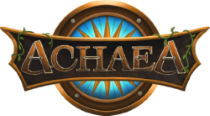Achaea Help Files
Achaea has hundreds of help files to you learn about Achaea. This is a copy of the in-game help file structure. HELP in-game will show you this same menu.
9.37.3 CRAFTING GUIDELINES
As a new crafter, Achaea's guidelines and standards can sometimes seem difficult to navigate. We recognise there's a lot of information to process, and it's for that reason we've created HELP <craft> DESIGN to cover the specifics of each crafting skill. This file is intended as a general purpose reference that applies to all skills, aiming to cover common mistakes and pitfalls as well as provide some detailed lists of restricted materials, frequently mixed-up words, and information on races and their use in crafting designs. COMMON MISTAKES AND GENERAL GUIDELINES -------------------------------------- Probing your sketches will highlight common mistakes in your designs and give you an error count at the bottom. The PROOF command will highlight, count, and explain the errors. Red denotes something that is always wrong. Yellow highlighting is to double check that this is the correct use in this instance. Incorrect case for race names are also included and will highlight red. --------------------------------------- 1) A common misuse of words is compliment and complement. Complement means to complete or enhance. Compliment means to praise. This belt complements the dress better than that one. A belt compliments the wearer's waist. 2) Another common misuse of words is that vs which. That - defines a variable. Which - defines a constant. The ring that has blue pearls. (a ring that can be identified by blue pearls) The ring, which has blue pearls. (all rings have blue pearls, so this one does too). 3) Organisation names should be capitalised. "A tunic of a Runewarden novice lies here." You are not able to capitalise things in the appearance description. These will be set prior to the approval of the pattern by the Delosian Crafting Council. 4) Race names should only be capitalised at the start of a sentence, except for the Tsol-related races (Tsol'teth, Tsol'aa, Tsol'dasi) and Vertani whose names are always capitalised. This covers all usage of the race, not only its actual name. Incorrect: A Xorani style suit made for a Xoran. Correct: A xorani style suit made for a xoran. 5) When making lists of three or more items standard rules apply of using the Oxford comma. This means that correct usage is red, blue, and yellow. 6) Initials and insignia are fine to put in your examined description. Emoticons and other forms of random symbols are not considered an insignia. (i.e. ^.^ ^-^ ;) etc.) Such symbols spoil a good description. 7) It's means it is. Its is the possessive form of "it". THIS IS ALWAYS THE CASE. 8) There are children in Achaea. Keep your designs tasteful. It is possible to be sexy and tasteful, without being disgusting. 9) Peacock wing and body feathers are bland and unimpressive. It is their tail feathers that are impressive and usually multicoloured. 10) Unicorns in Achaea are extinct. They are NOT permitted in any form to be used in crafting designs. This includes hair, skin, bone, horn, or any other permutation of unicorn. 11) Allow your designs to speak for themselves. Branding and marketing should be done after creation, and not as part of the design. This essentially means that adding messages or brand names into designs is not appropriate. The sole exception is in labels for bottles created via vessel design that will eventually contain drinks. 12) Beverages and vessels are standalone designs, they should not and cannot include drinking accessories such as straws or spoons. 13) Lemonade is innately fizzy. If you are submitting a design for lemonade that is not fizzy (American style), this should be described as a diluted juice. 14) Design descriptions should be written in formal English and not conversational style. Avoid using contractions such as "it's". 15. Pumpkin-spice, and pumpkin pie spice do not exist in Achaea. These are a modern American invention; if you are designing beverages or foodstuffs that use them, please explicitly list the individual spices and not the amalgamated (and anachronistic) whole. 16. All designs should be made from materials which can be sourced reliably and repeatably; particularly exotic, rare, unique, or one of a kind specimens are not suitable and will be rejected on those grounds. 17. Sentient races are not ingredients or crafting commodities. The sole exception to this is for hair and feathers which can be given freely without harm to the original owner, specifically for use in wigs. FREQUENTLY MADE ERRORS ---------------------- Incorrect Correct --------- ------- Bejeweled Bejewelled Center Centre Color Colour Cozy Cosy Fall Autumn Favor Favour Fries Chips Frosting Icing Gossamer (noun) Spider silk Green gold Electrum Eggplant Aubergine Honor Honour Jewelry Jewellery Jeweler Jeweller Karat Carat Luster Lustre Matte Matt Mold Mould Odor Odour Paneled Panelled Recognize Recognise Rivaling Rivalling Spiraling Spiralling Stylized Stylised Symbolize Symbolise Tantalize Tantalise Traveler Traveller Traveled Travelled Zucchini Courgette RESTRICTED MATERIALS -------------------- A number of materials and themes in Achaea are closely related to the Gods, and aspects of Their realms cannot be freely used in crafting designs. In almost all cases, the below materials and references require the in-character approval of the God in question before they may be used: Material/Theme God -------------- --- Bloodsteel Sartan Demon-skin/bone/etc Sartan Moonstones Ourania Phoenix Aurora Red fog Sartan Shadows Twilight Mithril Pantheon-wide Celestite Scarlatti This list is not entirely exhaustive, but covers the more commonly used materials and imagery.
